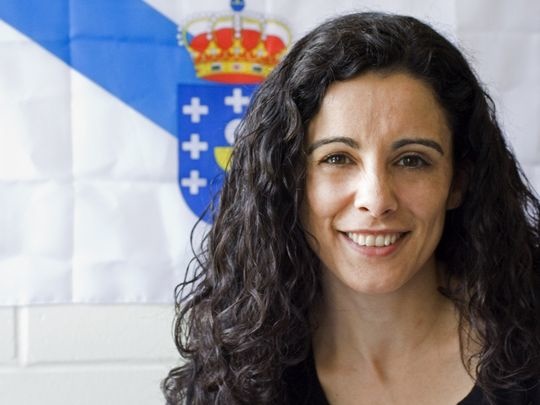Commentary by Denise Filios and Ana Rodriguez-Rodriguez for the Iowa City Press-Citizen.
2015 marks the 400th anniversary of the publication of "Don Quixote," volume two. Cervantes’ masterpiece is widely considered to be the first novel, but is best known for the comic duo of the crazy knight-errant, Don Quixote, and his chubby squire, Sancho Panza, whose down-to-earth simplicity makes his master’s flights of fancy even more ridiculous. Centuries after they first appeared in print, these two characters continue to inspire new artistic production throughout the world, in art, music and film. The digital age has only enhanced their popularity, as a new generation re-envisions the knight and squire in video games and graphic novels.

"Don Quixote" was written in two parts published 10 years apart. In his first volume, published in 1505, Cervantes may have wanted to destroy chivalric novels through his mordant parody of such popular literary figures as King Arthur and Merlin. In the process, he produced a very funny book that became an instant international hit. While working on volume two, he was horrified to find his book plagiarized in an unauthorized sequel that, even worse, was badly written.
Driven to defend his reputation and to assert his authorial rights, Cervantes finally completed volume two, in the process immortalizing both the "false Quixote" and his comic duo. Don Quixote’s and Sancho’s awareness of themselves as literary characters interacting with their readers elevates them to tragic-comic heights and makes them yet more liable to re-appropriation, re-writing, re-envisioning — in brief, a cultural patrimony repeatedly made new in every subsequent adaptation.
“Parody, Plagiarism, Patrimony: Don Quixote in the Age of Electronic Reproduction,” the 2015 Obermann-International Programs Humanities Symposium (Oct. 22-24), will explore the origins and extended life of Cervantes’ novel. Showcasing the talents and resources of the University of Iowa and the Iowa City community, the symposium will also provide a platform for visiting speakers and public lectures that make connections between the novel and its appropriations.
If you’re interested in learning more about "Don Quixote," its place in world literature, and the impact it continues to have on artistic expression, we invite you to join us for WorldCanvass from 5 to 6:30 p.m. Sept. 15 at FilmScene. We’ll preview the symposium and many related activities, including the appearance of Monty Python’s Terry Gilliam on Oct. 23, sponsored by the UI Lecture Committee and FilmScene; a UI symphony concert on Sept. 30, featuring Richard Strauss’ tone poem “Don Quixote”; exhibitions of art and rare books curated by the UI Museum of Art, the Old Capitol Museum, and the UI Libraries’ Special Collections; and a concert performance of "Man of La Mancha" the evening of Oct. 24.

As professors of Spanish literature and culture, we are privileged to share our passion for Don Quixote and his many reincarnations with our students. The fact that they get inspired by the brave quest of this 400-year-old mad hero and themselves go on to accomplish amazing feats reminds us how relevant Cervantes’ novel is today. Their creative engagement with this old novel inspires us to explore anew the proliferation of Quixotes in the digital age. We are thrilled to have this unique opportunity to collaborate with community and university partners to celebrate Don Quixote’s extended afterlife, here in a UNESCO City of Literature.
Denise Filios and Ana Rodriguez-Rodriguez are associate professors in the UI Department of Spanish and Portuguese and co-organizers of the 2015 Obermann-International Programs Humanities Symposium.